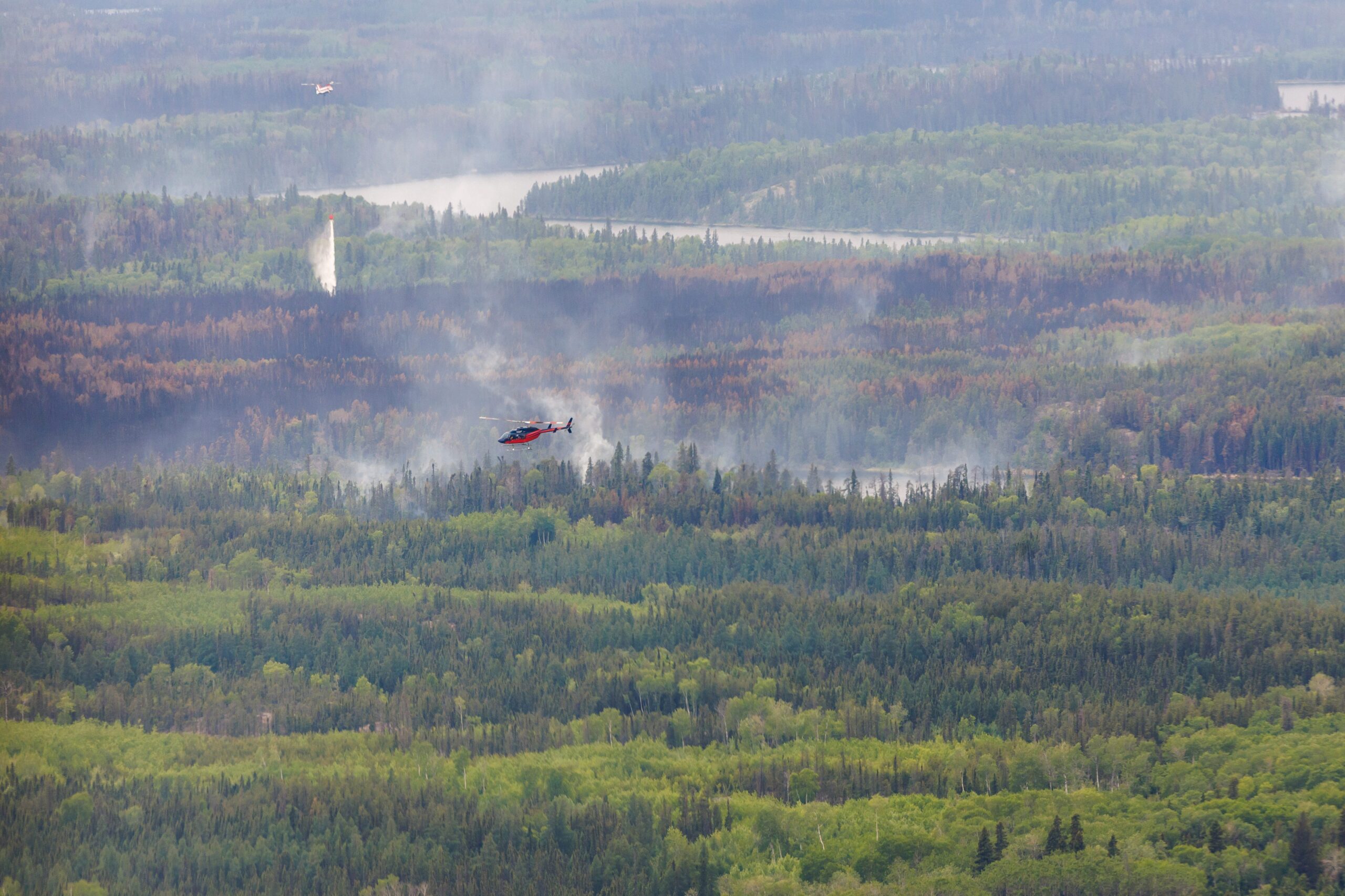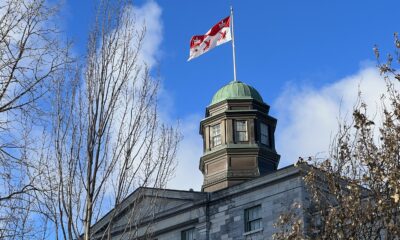Politics
Canada Faces Escalating Wildfire Crisis: A Call for Collective Action

As wildfire season intensifies across Canada, communities are grappling with the devastating consequences of increasingly frequent and severe fires. Evacuations have become commonplace, with properties lost to the flames, highlighting the urgent need for a comprehensive approach to wildfire management and resilience.
Over the past decade, Canada has witnessed a record number of wildfires, with the most significant single fire area burned occurring in recent years. Factors contributing to this surge include extreme weather conditions—characterized by high temperatures, low humidity, and strong winds—exacerbated by climate change. Additionally, an accumulation of organic materials on the landscape and evolving land-use patterns have increased the wildfire risk.
Research from the POLIS Wildfire Resilience Project at the University of Victoria emphasizes the importance of integrating beneficial fire practices into land management strategies. These practices include Indigenous cultural burning and prescribed fires, which aim to maximize ecological benefits while minimizing risks to communities. Historically, fire has played a crucial role in shaping diverse ecosystems across Canada, supporting healthy watersheds and Indigenous cultures.
The dramatic rise in catastrophic fires can be attributed to a longstanding policy of wildfire suppression, which has led to fuel accumulation in many areas. While suppression will remain essential in protecting communities and conserving ecosystem services, a more diverse and proactive approach is necessary. This includes collaboration among various stakeholders, incorporating traditional practices, and allowing beneficial fires to burn under controlled conditions.
A recent example from British Columbia illustrates the potential of this approach. During the summer of 2024, a First Nation collaborated with the BC Wildfire Service to conduct a cultural burn that ultimately helped protect lives and homes from the St. Mary’s wildfire. In another instance, portions of a wildfire near the Wet’suwet’en community of Witset were intentionally allowed to burn, enhancing ecosystem health while safeguarding the village.
Despite increasing awareness of the benefits of fire, opposition persists, rooted in longstanding fears and the very real threats that wildfires pose to communities. Until residents feel secure from wildfire risks, acceptance of beneficial fire practices will remain limited. Creating a sense of safety is crucial for fostering community support for wildfire resilience measures.
Programs such as FireSmart advocate for a holistic approach to wildfire resilience, offering practical measures to reduce property loss. Homeowners living near fire-prone areas can implement simple actions, such as clearing flammable materials from around their homes. Communities, in turn, can work on effective evacuation planning.
The success of risk reduction initiatives often relies on a combination of voluntary measures and mandatory regulations. For instance, establishing requirements for fire-resistant building materials and landscaping practices necessitates updated provincial building codes and local government plans. Coordinated action across all levels of society is vital for achieving these objectives.
Recent initiatives, such as the Canadian Council of Forest Ministers’ Canadian Wildland Fire Prevention and Mitigation Strategy and the G7 Kananaskis Wildfire Charter, highlight the growing recognition of the need for collective responsibility in wildfire management. Historically, wildfire management in Canada has operated under a top-down model, but there is a gradual shift towards shared responsibilities that include Indigenous authorities and local communities.
As Canada braces for another challenging wildfire season, meaningful action is essential. Collaboration among provincial, local, and federal governments, alongside Indigenous groups and community organizations, is crucial in addressing the multifaceted challenges posed by wildfires. Individuals can also take steps to safeguard their homes through vegetation management and the use of fire-resistant materials.
The collective efforts of diverse stakeholders will play a pivotal role in fostering resilience against wildfires, enabling communities to adapt and thrive in a landscape increasingly shaped by fire.
Kevin Kriese, a senior wildfire and land-use analyst at the Centre for Global Studies at the University of Victoria, along with Andrea Barnett, project manager for the POLIS wildfire resilience project, and Oliver Brandes, co-director of the POLIS Project on Ecological Governance, advocate for these essential changes in wildfire management.
-

 Politics4 weeks ago
Politics4 weeks agoSecwepemc First Nation Seeks Aboriginal Title Over Kamloops Area
-

 World5 months ago
World5 months agoScientists Unearth Ancient Antarctic Ice to Unlock Climate Secrets
-

 Entertainment5 months ago
Entertainment5 months agoTrump and McCormick to Announce $70 Billion Energy Investments
-

 Science5 months ago
Science5 months agoFour Astronauts Return to Earth After International Space Station Mission
-

 Lifestyle5 months ago
Lifestyle5 months agoTransLink Launches Food Truck Program to Boost Revenue in Vancouver
-

 Technology3 months ago
Technology3 months agoApple Notes Enhances Functionality with Markdown Support in macOS 26
-

 Lifestyle3 months ago
Lifestyle3 months agoManitoba’s Burger Champion Shines Again Amid Dining Innovations
-

 Top Stories2 months ago
Top Stories2 months agoUrgent Update: Fatal Crash on Highway 99 Claims Life of Pitt Meadows Man
-

 Politics4 months ago
Politics4 months agoUkrainian Tennis Star Elina Svitolina Faces Death Threats Online
-

 Sports5 months ago
Sports5 months agoSearch Underway for Missing Hunter Amid Hokkaido Bear Emergency
-

 Politics5 months ago
Politics5 months agoCarney Engages First Nations Leaders at Development Law Summit
-

 Technology5 months ago
Technology5 months agoFrosthaven Launches Early Access on July 31, 2025




















